

Ten Takeaway Tips for Teaching Critical Thinking. Suggestions from educators at KIPP King Collegiate High School on how to help develop and assess critical-thinking skills in your students.
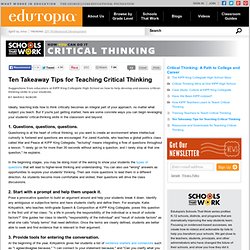
Ideally, teaching kids how to think critically becomes an integral part of your approach, no matter what subject you teach. But if you're just getting started, here are some concrete ways you can begin leveraging your students' critical-thinking skills in the classroom and beyond. 1. Questions, questions, questions. Questioning is at the heart of critical thinking, so you want to create an environment where intellectual curiosity is fostered and questions are encouraged. In the beginning stages, you may be doing most of the asking to show your students the types of questions that will lead to higher-level thinking and understanding. Negotiation Skills: Giving Feedback. Who Needs It? It Might Be You.
InShare16.
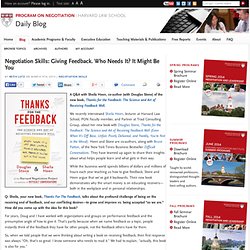
5 Powerful Questions Teachers Can Ask Students. My first year teaching a literacy coach came to observe my classroom.

After the students left, she commented on how I asked the whole class a question, would wait just a few seconds, and then answer it myself. How to Ignite Intellectual Curiosity in Students. Twitter Cheat Sheet {12 Days: Tool 4} Twitter for Educators Twitter, the popular social media platform, is continually picking up momentum in its number of users; however, I find many educators who are not tapping into the power of Twitter.

The mystery that surrounds Twitter, I believe, keeps many people from benefiting from the potential it holds. Consider this recent post on Facebook from a friend who revealed, “My mom thought that hashtags were code messages.” Time Management: Planning for the Adventure. Image credit: iStockphoto As we leave summer and approach back to school in a frenzy, the "To Do" list can become overwhelming. As teachers, we find ourselves pulled in different directions -- setting up our classrooms, learning student profiles, meeting with parents, lesson planning, collaborating with administrators -- the list seems eternal!
Addressing Our Needs: Maslow Comes to Life for Educators and Students. In the mid-1950s, humanistic psychologist Abraham Maslow created a theory of basic, psychological and self-fulfillment needs that motivate individuals to move consciously or subconsciously through levels or tiers based on our inner and outer satisfaction of those met or unmet needs.
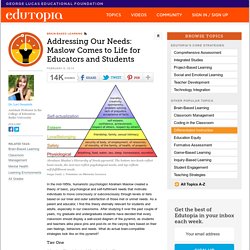
As a parent and educator, I find this theory eternally relevant for students and adults, especially in our classrooms. After studying it over the past couple of years, my graduate and undergraduate students have decided that every classroom should display a wall-sized diagram of the pyramid, as students and teachers alike place pins and post-its on the varying tiers based on their own feelings, behaviors and needs.
What do actual brain-compatible strategies look like on this pyramid? Tier One Meeting Physiological Needs in the Classroom These elements contribute to brain-compatible learning by creating a physical environment that is inviting, warm and friendly! Questions to Ask Myself. Curiosity killed by class? When you become a father you get used to being asked endless questions about the intricacies of our complex world.
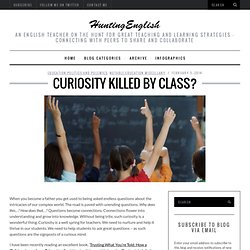
The road is paved with unending questions. Why does this…? How does that…? Questions become connections. Connections flower into understanding and grow into knowledge. Say What? 5 Ways to Get Students to Listen. Ah, listening, the neglected literacy skill.
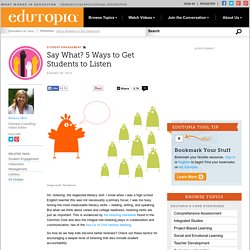
I know when I was a high school English teacher this was not necessarily a primary focus; I was too busy honing the more measurable literacy skills -- reading, writing, and speaking. But when we think about career and college readiness, listening skills are just as important. This is evidenced by the listening standards found in the Common Core and also the integral role listening plays in collaboration and communication, two of the four Cs of 21st century learning. So how do we help kids become better listeners? Check out these tactics for encouraging a deeper level of listening that also include student accountability:
Teachers TV - Schools. Finland’s Formula for School Success (Education Everywhere Series) Pasi: If you look at the 15-year-olds, or 16-year-old Finns who are leaving the basic school, most of them have been in special education throughout their schooling.

Which means that special education is actually nothing special. So it's you are a special child or student if you haven't been, if you haven't ever used special services. 5 Ways to Make Class Discussions More Exciting. Classroom discussions have been a staple of teaching forever, beginning with Socrates.
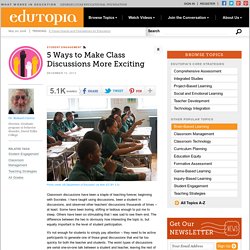
I have taught using discussions, been a student in discussions, and observed other teachers' discussions thousands of times -- at least. Some have been boring, stifling or tedious enough to put me to sleep. Others have been so stimulating that I was sad to see them end. The difference between the two is obviously how interesting the topic is, but equally important is the level of student participation.
It's not enough for students to simply pay attention -- they need to be active participants to generate one of those great discussions that end far too quickly for both the teacher and students. The best discussions keep everyone active, either by sharing or thinking. 1.